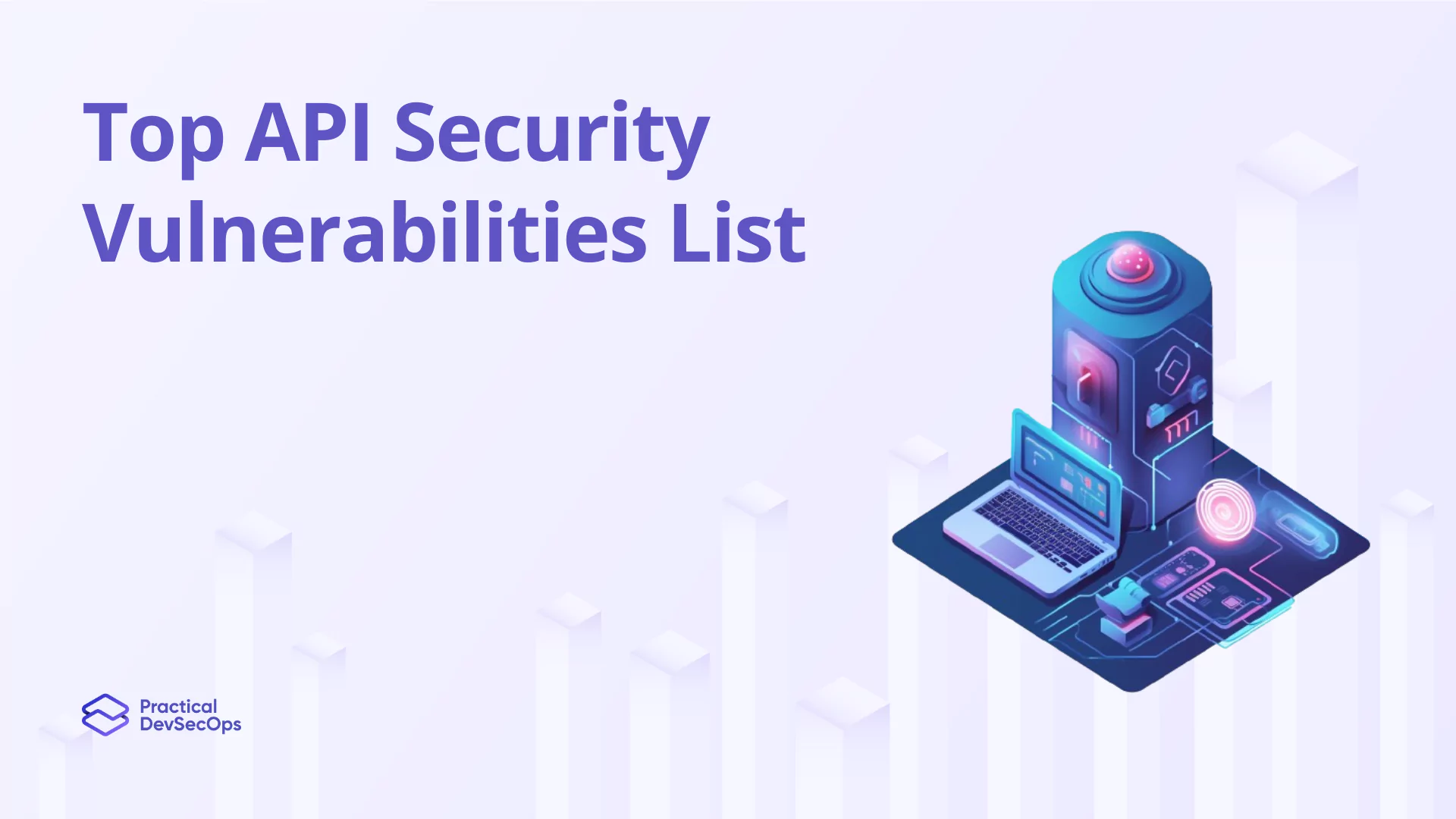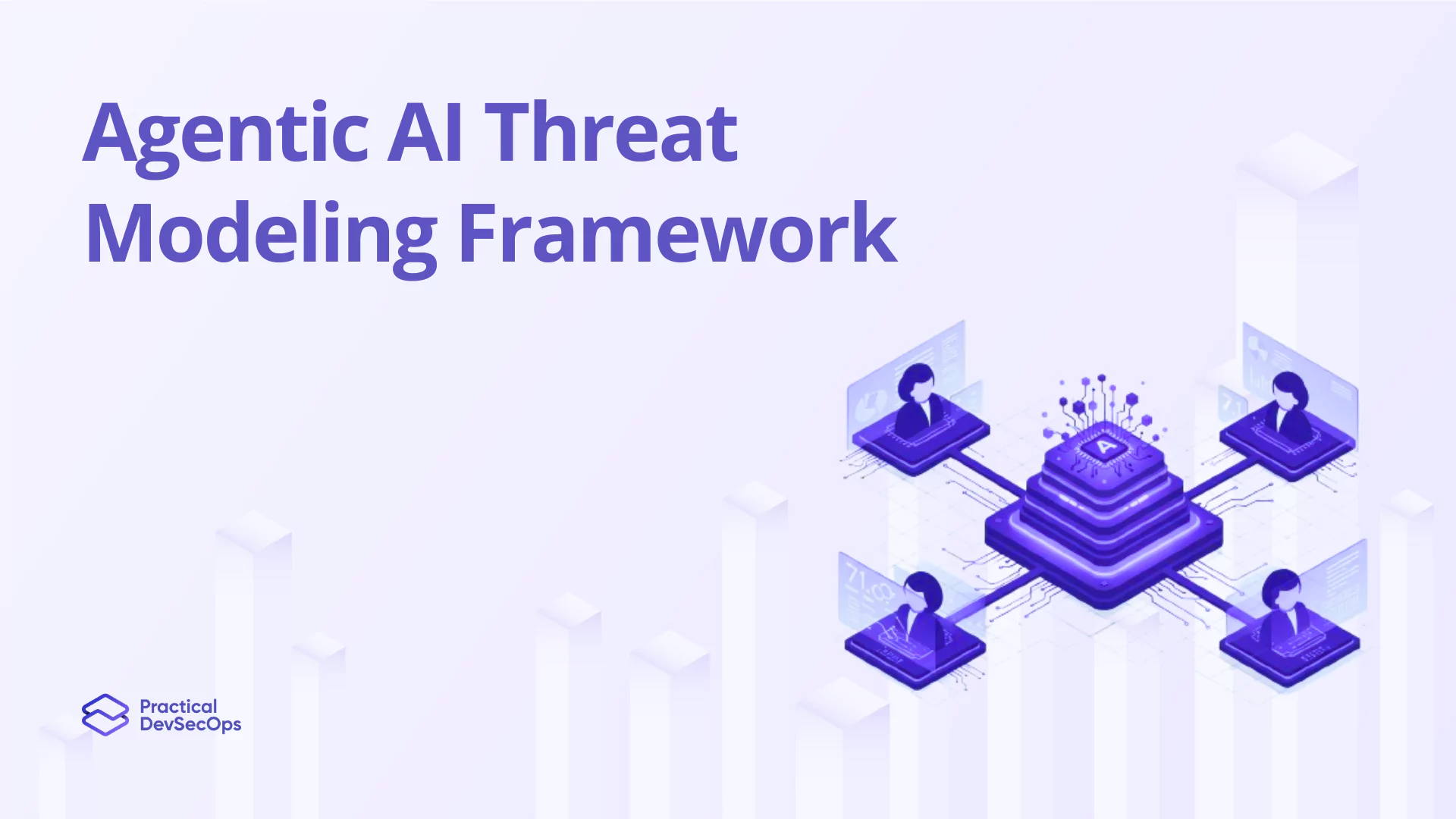APIs (Application Programming Interfaces) are pivotal in modern software development, enabling applications to interact seamlessly. However, their widespread use also makes them a prime target for cyber-attacks.
Understanding the common vulnerabilities can help organizations and security professionals implement more effective defenses.
This blog outlines the top API security vulnerabilities, providing insights for IT security professionals looking to fortify their systems.
Also read Tips for API Security Assessment in 2025
10 API Security Vulnerabilities
Broken Object Level Authorization
Often abbreviated as BOLA, broken object level authorization is one of the most critical API security risks. It occurs when APIs fail to adequately secure objects that users can access, allowing attackers to manipulate these references to access unauthorized data.
Broken Authentication
APIs that improperly implement user authentication can allow attackers to assume the identity of other users. Common issues include insufficient validation of authentication tokens and flaws in token generation and handling processes.
Also read our Comprehensive Guide to What is REST API Security
Excessive Data Exposure
APIs often expose more data than necessary, trusting clients to perform data filtering before displaying it to users. This practice can lead to sensitive data leaks if attackers intercept the data or if the client fails to secure it properly.
Lack of Resources & Rate Limiting
Without proper restrictions on the amount of data a user or service can request, APIs can be vulnerable to denial-of-service attacks, or system resources can be overwhelmed, leading to service degradation or system crashes.
Also read Ensuring API Security with OAuth 2.0
Injection Flaws
Injection flaws, such as SQL, NoSQL, Command Injection, or others, occur when untrusted data is sent to an interpreter as part of a command or query. Attackers can exploit vulnerable APIs to execute unintended commands or access unauthorized data.
Improper Assets Management
APIs that are outdated, improperly documented, or misconfigured can pose serious security risks. This includes exposed debug interfaces, outdated API versions still in operation, and exposed sensitive information through metadata.
Insufficient Logging & Monitoring
Insufficient logging and monitoring increase the time to detect security breaches. Effective monitoring and logging can alert organizations to unauthorized attempts to access APIs, allowing for quick countermeasures.
Security Misconfiguration
This broad category can include various misconfigurations such as improper HTTP headers, open cloud storage, verbose error messages containing sensitive information, or misconfigured HTTP methods.
Also read Best API Security Books in 2025
Cross-Site Scripting (XSS)
In APIs, XSS can be introduced when unescaped data is included in HTML, JavaScript, or other content generated by servers. This vulnerability can lead to the execution of malicious scripts in the user’s browser, compromising user interactions.
Insecure Deserialization
Insecure deserialization can lead to remote code execution, replay attacks, or injection attacks. It occurs when untrusted data is used to abuse the logic of an application, causing unintended behavior.
Also read API Security Best Practices to Follow
Emerging API Security Threats Beyond OWASP Top 10
Shadow & Zombie APIs: Hidden Endpoints
- Shadow APIs are undocumented endpoints built outside official processes and missed by security teams.
- They run in production but bypass logging, auditing, and authentication.
- Zombie APIs are abandoned or deprecated, but still accessible and unpatched.
- Both create blind spots — attackers can exploit them for unauthorized data access, leaks, or breaches.
- Regular API discovery helps uncover these dangerous hidden endpoints.
Shadow vs. Zombie APIs
| Aspect | Shadow API | Zombie API |
| Lifecycle Stage | Active (used, but unofficial) | Deprecated, abandoned, but live |
| Security Risk | No monitoring, weak or absent controls | Outdated, vulnerable functionality |
| Typical Impact | Data leaks, unauthorized access | Exploitable old flaws, lingering breaches |
Business Logic Abuse & API Supply-Chain Risks
- Business logic abuse means attackers use APIs exactly as designed, but in ways developers didn’t expect.
- Instead of breaking in, attackers trigger refunds, override settings, or misuse payment flows.
- Supply-chain APIs (linked partners, third-party services) widen exposure — poor controls can leak data or enable fraud.
- These abuses are hard to detect as traffic looks normal; strong role checks and contextual controls are needed.
AI-Driven Bot Attacks & Credential Stuffing
- Modern bots use AI to bypass security, simulate real users, and execute credential stuffing attacks faster.
- Credential stuffing means testing stolen usernames and passwords in bulk across APIs and websites.
- AI bots learn from past patterns and adapt to defeat CAPTCHAs, rate limiting, and classic defences.
- Sensitive APIs (login, user account, financial flows) are most targeted; monitoring, strong authentication, and behaviour analysis are key.
Each topic highlights how security gaps can be invisible or easily abused. Simple practices like inventory, monitoring, and updated controls defend APIs against evolving threats.
API Security in the AI Era
Generative AI–Induced Risks: Attack Surface Expansion & Data Leakage
- Generative AI (GenAI) greatly expands the attack surface for APIs, introducing new security challenges beyond traditional threats.
- It enables attackers to generate malicious API requests at scale and probe for vulnerabilities efficiently, increasing risks of denial-of-service (DoS) and exploitation.
- The vast data used to train GenAI models raises concerns about accidental or intentional leakage of sensitive information through APIs.
- Mitigations include strong API authentication, continuous monitoring, and layered security combining AI and traditional controls.
Prompt Injection: Directed Attacks on LLM-Driven Endpoints
- Prompt injection is a novel attack targeting large language models (LLMs) accessed through APIs.
- Attackers insert harmful instructions into prompts, tricking the model to behave unpredictably, such as leaking sensitive data or executing harmful actions via plug-ins.
- These attacks target the application layer using LLMs, not the core AI model itself, and can be used to bypass intended safeguards.
- Strong input sanitization, prompt filtering, and security-aware design of LLM plugins can reduce risks.
GraphQL API Vulnerabilities: Malicious Query Injection Detection
- GraphQL APIs allow flexible queries but this flexibility can lead to complex, malicious queries causing overload or data leaks.
- Attackers craft nested or expensive queries to induce denial-of-service or inject malicious payloads such as SQL or command injections.
- Traditional API security is insufficient; AI-driven anomaly detection and machine learning can help detect and block malicious queries in real time.
- Basic protections include query depth limiting, rate limiting, and monitoring unusual query patterns.
Detection & Response Gaps in API Security
- Many organizations face an alarming lack of visibility into API attacks, making detection and mitigation difficult.
- Traditional detection tools like Endpoint Detection and Response (EDR) often fail to spot advanced API attacks because they lack deep visibility into API-specific behaviors.
- Many APIs run without proper monitoring or are shadow/zombie APIs, creating blind spots for attackers to exploit undetected.
- Mitigation rates remain low as many attacks mimic normal API traffic patterns, evading signature-based tools.
Governance Challenges: Missing Inventories & Ineffective Tools (WAF/CDN)
- A major governance challenge is the lack of accurate, up-to-date API inventories; many APIs are undocumented or change rapidly, outpacing manual tracking efforts.
- Without real-time inventory, organizations struggle to enforce consistent security policies or detect shadow APIs.
- Traditional security tools like WAFs and CDNs often underperform for APIs because they are designed for web applications, not the complex, dynamic nature of APIs.
- WAFs/CDNs may miss API-specific threats or fail to understand API traffic nuances, leaving internal APIs exposed.
- Many organizations rely on fragmented tools with limited API context, reducing their ability to govern and secure APIs effectively.
Improving API security requires closing these visibility gaps with continuous, automated API discovery, security tools tuned specifically for APIs, and better governance frameworks to track and control API usage in real time.
Design and Dev‑Time Weaknesses
- Insecure API Design: Many APIs wrongly assume client-side security controls are sufficient. This flaw lets attackers bypass client logic and directly exploit APIs, leading to unauthorized data access and privilege escalation.
- Regex-Based Denial-of-Service (ReDoS): APIs with exposed regex logic can be targeted with malicious input causing excessive processing, leading to denial-of-service by overwhelming resources.
- LLM-Generated Code Misuse: Code produced by large language models often misuses parameters and methods due to limited context or understanding, resulting in insecure API calls and potential data exposure or logic errors.
Advanced Mitigation & Security Practices
- Zero-Trust & Continuous Authentication: Zero-Trust enforces “never trust, always verify” by continuously authenticating users/devices and applying least-privilege access. Continuous authentication uses behavioral biometrics and context to verify identity dynamically, reducing insider risks and credential abuse.
- ABAC/RBAC: Attribute-Based Access Control and Role-Based Access Control provide fine-grained authorization by controlling API access based on user roles or contextual attributes, improving security over coarse controls.
- AI Anomaly Detection: AI and machine learning monitor API traffic patterns in real time to detect unusual behaviors or attacks that traditional tools miss, enabling faster threat response.
- OpenAPI Extended Security: Extending OpenAPI specifications with security rules enables enforcing object-level authorization directly at the API gateway or service layer, reducing risks of unauthorized data access.
- LLM-Based GraphQL Threat Detection: AI models analyze GraphQL queries to detect malicious or expensive query patterns, preventing denial-of-service and injection attacks more effectively than static rules.
- Prompt Injection Mitigation: Use input hygiene, guardrails, and adversarial testing on prompts to protect LLM-driven endpoints from malicious input attacks that exploit language model behavior.
Conclusion
Awareness and understanding of these top API security vulnerabilities are the first steps toward securing your APIs against potential threats. Regular security audits, adherence to API security best practices, and continuous education through courses like the Certified API Security Professional Certification by Practical DevSecOps can greatly enhance an organization’s defense mechanisms.
Strengthen your API security by enrolling in the Certified API Security Professional Certification. Gain the expertise to identify, assess, and mitigate API vulnerabilities with Practical DevSecOps, ensuring robust security protocols and safeguarding your applications against the evolving landscape of cyber threats.
Also read and Download our API Security Fundamentals E-Book
FAQ’s
What are vulnerabilities in APIs?
Vulnerabilities in APIs are security weaknesses that can be exploited to compromise the integrity, availability, or confidentiality of the API or the data it handles. Common examples include insufficient input validation, broken authentication, and insecure data exposure.
How do I scan APIs for vulnerabilities?
To scan APIs for vulnerabilities, you can use automated tools such as OWASP ZAP, Postman with its security scans, or specialized API security platforms like Apigee or Burp Suite. These tools help test API endpoints against common vulnerabilities and improper configurations.
What is API breaches?
API breaches refer to security incidents where unauthorized parties exploit vulnerabilities in APIs to gain access to sensitive data, manipulate data, or disrupt services. Such breaches often result from insecure API endpoints, flawed authentication mechanisms, or insufficient encryption.
What are the security risks of APIs?
Security risks of APIs include:
- Exposure of Sensitive Data: APIs that improperly handle data can expose personal or financial information.
- Broken Authentication: Flawed or weak authentication mechanisms can allow unauthorized access.
- Injection Attacks: SQL injection or other injection flaws can occur if inputs are not properly sanitized.
- Misconfiguration: Inadequate security configurations can expose APIs to unauthorized access or data leaks.
What are the possible attacks on APIs?
Possible attacks on APIs include:
- Man-in-the-Middle (MitM) Attacks: Interception of data in transit.
- Injection Attacks: Such as SQL, NoSQL, or command injection.
- Denial of Service (DoS): Overloading the API with requests to disrupt service.
- Credential Stuffing: Using stolen account credentials to gain unauthorized access.
What are the common examples of API attacks?
Common examples of API attacks include:
- Credential Stuffing: Using breached usernames and passwords to access APIs.
- Cross-Site Scripting (XSS): Injecting malicious scripts through APIs that are reflected on web pages.
- Cross-Site Request Forgery (CSRF): Tricking a user’s browser into making unwanted requests to an API.
What is the most difficult API Vulnerability to uncover?
The most difficult API vulnerability to uncover often involves complex authentication and authorization issues, such as flaws in token-based authentication mechanisms like JWT (JSON Web Tokens). These vulnerabilities can be hard to detect because they require understanding the specific implementation and security measures of the API.
What are shadow and zombie APIs—and why are they dangerous?
Shadow APIs are active, undocumented APIs created or used without IT or security oversight. Zombie APIs are old, deprecated APIs still accessible but unmaintained. Both expand the attack surface, lack proper security controls, and can lead to unauthorized access, data leaks, or breaches because they are often unmonitored and vulnerable.
How can business logic flaws in APIs be detected and mitigated?
These flaws occur when APIs allow unintended actions within normal workflows. Detection requires analyzing API behavior and user flows for irregular patterns. Mitigation involves implementing strict authorization, enforcing business rules, continuous monitoring, and testing for logic abuse scenarios.
What are AI-driven API threats (bots, credential stuffing, generative AI risks)?
AI-enhanced bots can mimic users to launch sophisticated attacks like credential stuffing—testing stolen credentials at scale. Generative AI can automate and expand attack vectors, causing data exposure and rapid exploitation. Defense requires strong authentication, anomaly detection, and bot management.
How does prompt injection impact APIs that serve or interface with LLMs?
Prompt injection inserts harmful instructions into input prompts, tricking LLM APIs to reveal sensitive data or behave maliciously. This bypasses intended controls and can cause data leaks or unauthorized actions. Mitigations include input sanitization, guardrails, and adversarial testing.
What is the role of zero-trust architecture in modern API security?
Zero-trust means never assuming trust by default. It enforces continuous authentication and least-privilege access for every API request, reducing insider risk and credential abuse. It adapts dynamically to context and behavior for stronger security.
How can OpenAPI design help prevent broken object-level authorization?
Extending OpenAPI specs with detailed security rules allows fine-grained control at the object level. This ensures that API gateways enforce strict authorization on data objects, preventing unauthorized access beyond coarse permissions.
What are ReDoS vulnerabilities, and how can validation logic lead to denial-of-service?
ReDoS (Regular Expression Denial of Service) happens when complex or poorly designed regex patterns used in input validation cause excessive processing time. Attackers exploit this by sending specially crafted inputs, overwhelming the system and causing a denial of service.




